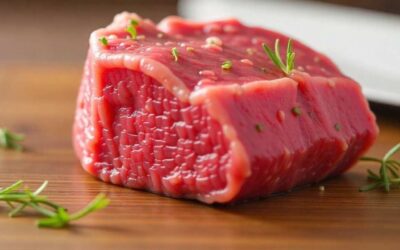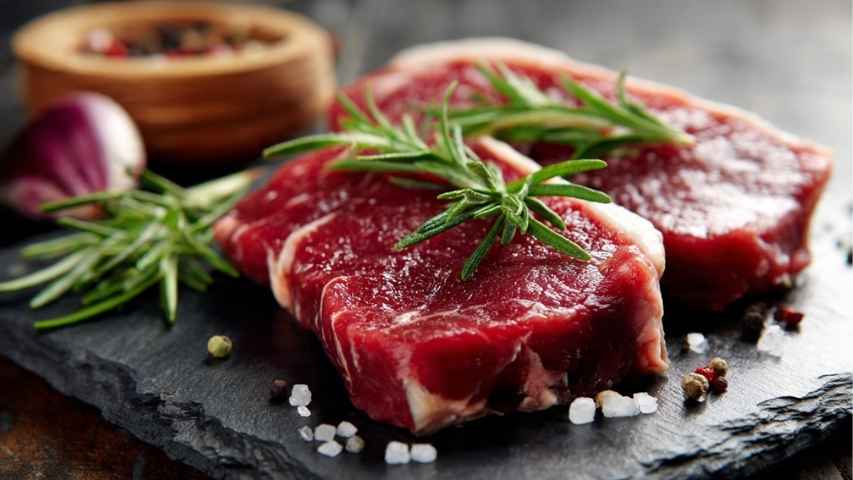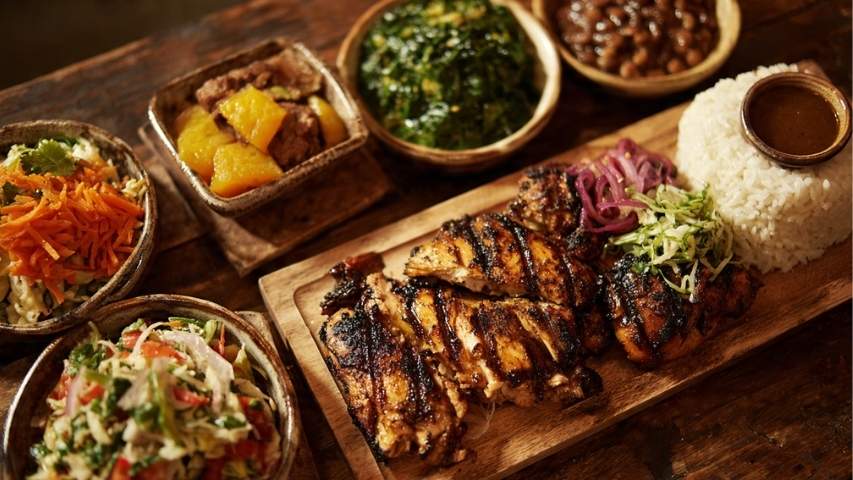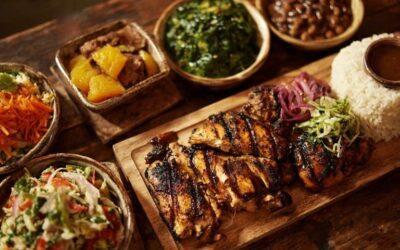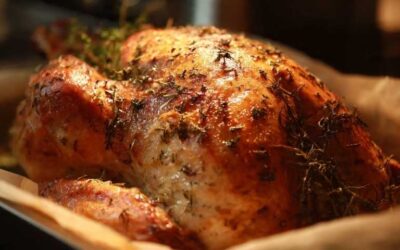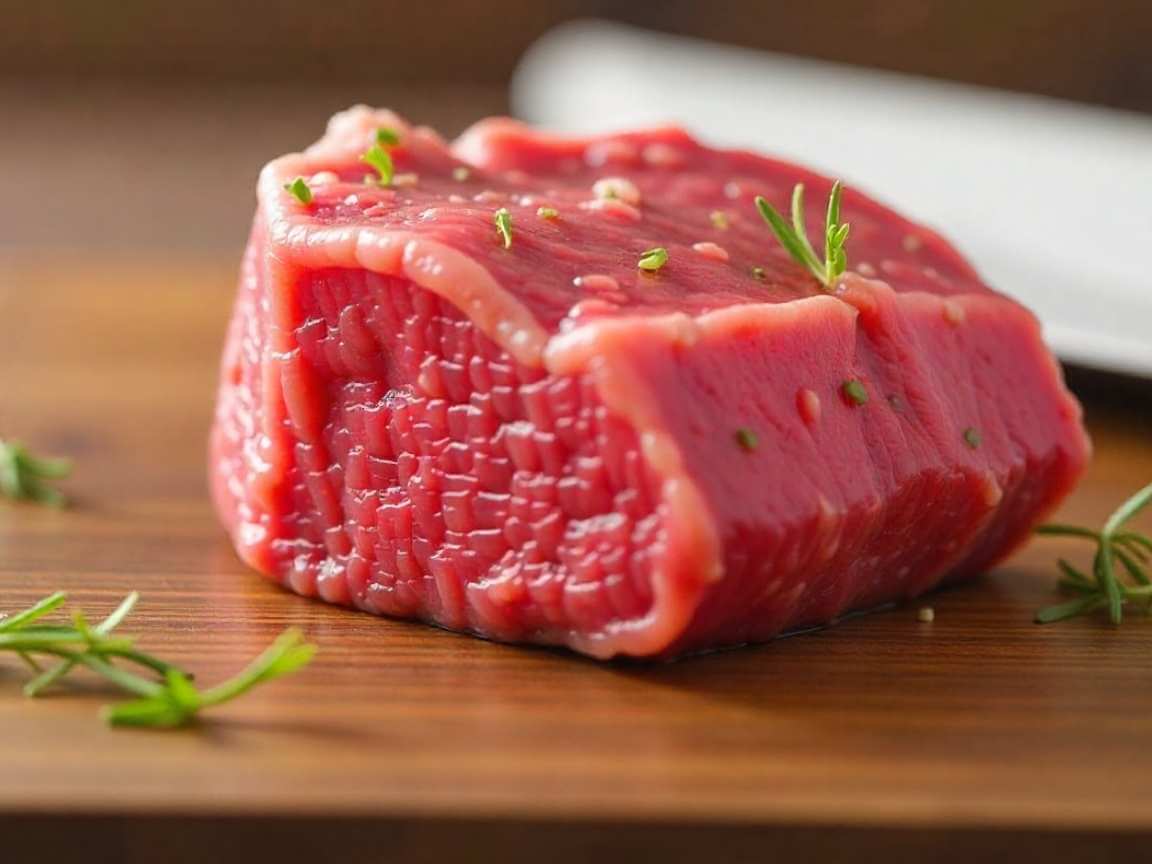Beef cheek is the jaw muscle that cows use to chew. Because this muscle works hard, it contains a lot of collagen that turns into a silky gelatin when cooked slowly. Each cheek, found below the eyes, weighs 12-16 ounces after trimming. With the right cooking method, this budget-friendly cut becomes very tender and full of flavor.
What Is Beef Cheek and Where Does It Come From?
Beef cheek comes from the facial muscles that cows use all the time for chewing. The USDA calls it a variety of meat, but it is actually a type of skeletal muscle. Each cow has two cheeks, each about one pound after trimming. The muscle sits in the jaw’s hollow, surrounded by fat and covered with a membrane that should be removed before cooking.
Because cows use their jaws so much, the muscle becomes dense and full of collagen. In Miami, butchers who work with whole animals often save beef cheeks for restaurants that know how special and tasty this cut can be.
Why Chefs Love Beef Cheek
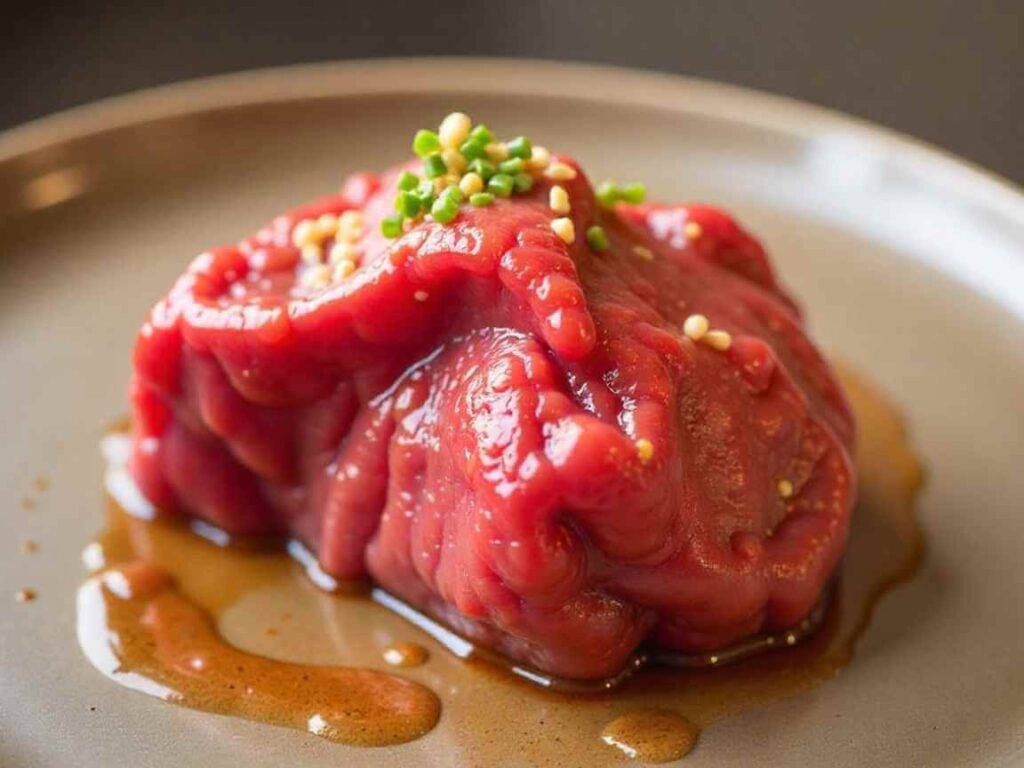
Chefs prize beef cheek for its high collagen content. Chefs love beef cheek because its high collagen turns into silky gelatin when braised. The meat has a strong, concentrated beef flavor, even richer than chuck or brisket, because the muscle works hard and has a good blood supply. When braised the right way, beef cheek becomes rich and satisfying with a luxurious texture. It has iron and slight gaminess, making it perfect for bold sauces. At Stubborn Seed, we enhance these natural flavors through careful seasoning and wine-based braising liquids.
Raw beef cheek starts firm and tough, but slow cooking transforms the collagen into glossy strands that pull apart easily while maintaining shape for elegant presentation.
Selecting Quality Beef Cheek
Select beef cheeks that are deep red in color with visible marbling and minimal surface discoloration. The meat should feel firm but not hard and have a fresh, slightly metallic smell. Select cheeks that retain their shape and avoid those that are over-trimmed, as this can lead to poor handling or prolonged storage.
The fat should be white or cream-colored, not yellow or showing any signs of spoilage. Well-aged beef cheeks may appear slightly tacky on the surface, indicating that enzymes are active and the meat is fresh.
Beef Cheek Pricing and Availability in Miami
In Miami, beef cheeks cost $8 to $30 per pound at specialty butchers, while restaurants usually pay less through their suppliers. Gourmet shops may offer imported or local options, depending on availability. Some frozen food stores sell beef cheeks, but you often need to special-order fresh ones.
Proper Labeling and Market Names
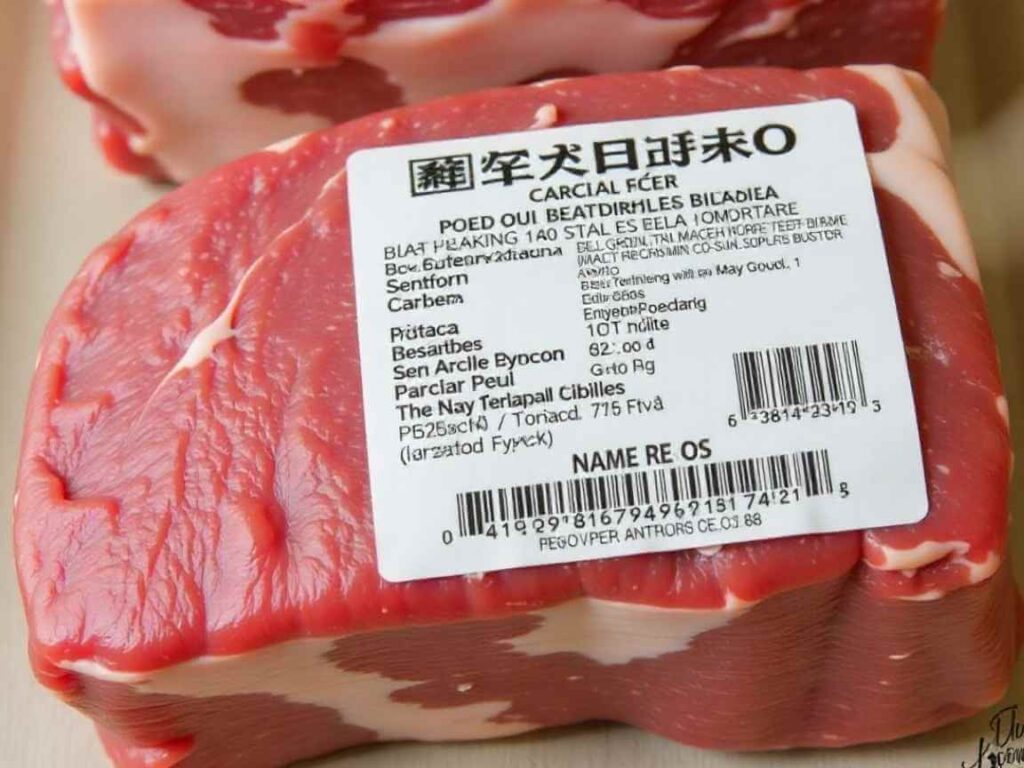
Look for the IMPS code 723 or descriptions such as “beef facial meat” or “carrillera” in Spanish-language markets. USDA labeling requires clear variety meat identification, including the country of origin for imported products. Labels should indicate trimmed or untrimmed status, fresh or frozen condition, and harvest date.
Suppliers may refer to beef cheeks as “honeycomb muscle” or “masseter muscle.” Miami’s Latin American community often requests “cachete de res,” so many markets use bilingual signage. Vacuum-packed products display the pack date, use-by date, and recommended storage temperature.
Preparation and Seasoning
Begin by taking off the silver skin membrane using a sharp boning knife. Cut at a shallow angle and pull the membrane tight as you work. This step removes 15-20% of the raw weight, but it is crucial for achieving the right texture.
Season beef cheek with kosher salt, black pepper, smoked paprika, and garlic powder at least two hours before cooking. Bold seasonings work well with the meat’s rich flavor.
Trimming Guidelines
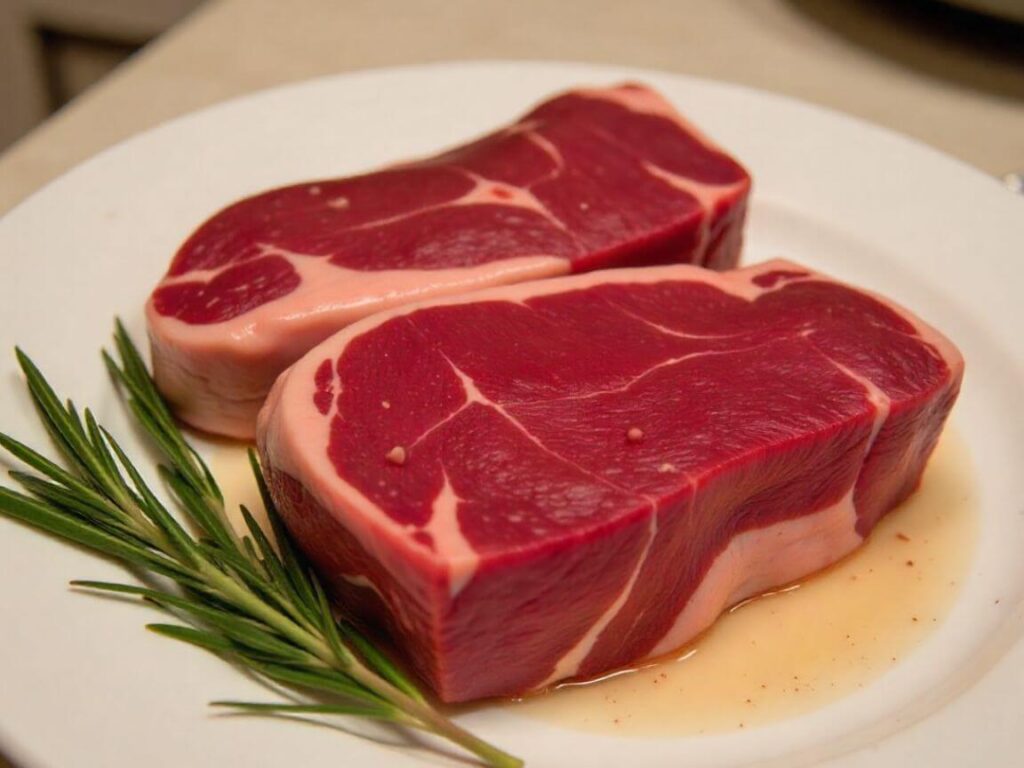
Remove all the external silver skin, as it remains tough during cooking. Leave the thinner membranes between muscle bundles, as they turn into gelatin. Remove any thick fat on the outside that is more than ¼ inch thick, but retain the internal marbling. Also, remove any small glands near the attachment point of the jaw.
Marinades with wine and acid help start breaking down the collagen. Our house marinade uses red wine, balsamic vinegar, thyme, bay leaves, and crushed garlic, and we let the meat soak for 12 to 24 hours in the fridge.
Braising Beef Cheeks: Sear beef cheeks in a heavy Dutch oven over high heat for 3 to 4 minutes on each side, until well browned. Set them aside, then cook diced onions, carrots, and celery until they are soft. Pour in red wine or beef stock to deglaze the pot, scraping up the browned bits. Put the cheeks back in and add enough liquid to cover about two-thirds of the meat, usually 3 to 4 cups for four cheeks. Four cheeks.
Best Braising Liquids
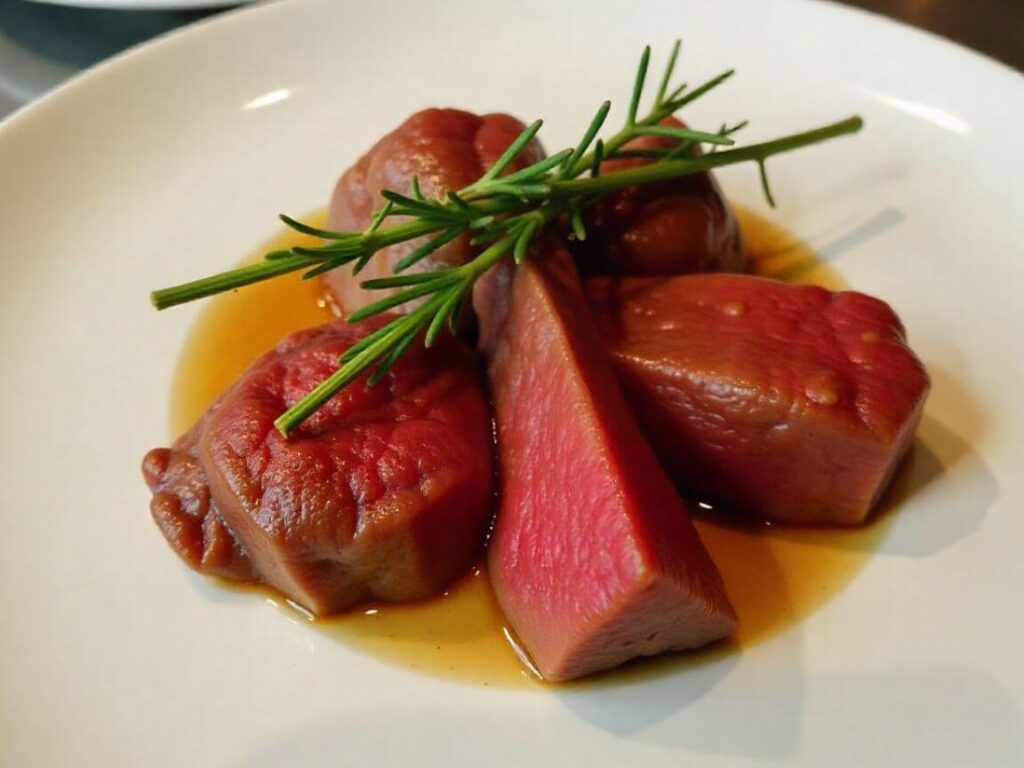
Mix beef stock and red wine in a 2:1 ratio, and add tomato paste for extra umami flavor. Put fresh thyme, rosemary, bay leaves, whole garlic cloves, black peppercorns, and juniper berries in cheesecloth and add them to the pot.
Keep the braising temperature between 185 and 195°F, which is hot enough to break down collagen but not dry out the meat. Star anise and cinnamon add warm spice flavors that are popular in Miami’s fusion cuisine.
Cook a Cook at 300°F for 3.5 to 4.5 hours, and start checking for doneness at the three-hour mark with a probe thermometer. When beef cheek is done, it should offer no resistance when pierced. Vide Cooking Method
Season the trimmed cheeks and then vacuum them with aromatic vegetable oil and a neutral oil. Set to fully breakly brethe akly brethe aklkeeping the meat’s texture. If you want a’s texture. If y’s texture. If y’s texture. For a firmer texture suitable for slicing, use 165°F for 18 hours.
After sous vide cooking, dry the surfaces well and sear the cheeks in a very hot cast-iron pan for 60 to 90 seconds on each side using high-heat oil.
Confit and Low-Temperature Roasting
Completely cover the seasoned beef cheeks in a mixture of rendered duck fat or beef tallow and clarified butter. Maintain a temperature of 200°F while cooking to achieve a silky texture and rich flavor. For low-temperature roasting, place the cheeks in a covered roasting pan with aromatics and enough fat to cover the sides halfway.
Duck fat is still the best choice for beef cheek confit. It imparts a clean flavor that enhances the meat without masking its natural taste.
Determining Doneness
A perfectly cooked beef cheek should pull apart easily with a fork yet still retain its shape. Look for the meat separating from the connective tissue and a deep brown caramelized surface.
To test if it’s done, insert a cake tester or thin probe. It should slide in as easily as it would in room-temperature butter. The surface will appear glossy due to the rendered collagen, and the muscle fibers should separate easily when you use a fork.
Storage and Reheating
Keep cooked beef cheeks in their braising liquid to stop them from drying out. Cool them in an ice bath to 70°F within two hours, then put them in the fridge to reach 41°F within a total of six hours.
Reheat gently in liquid over low heat or in a 300°F oven until internal temperature reaches 165°F. Avoid microwaving as it toughens the meat. Frozen portions can be stored for up to six months, but may have a softer texture after thawing.
Serving and Presentation
Restaurants often serve beef cheek over creamy polenta or celery root puree, topped with microgreens and finished with a reduced braising sauce. At Home, you can be more casual and serve shredded beef cheek on crusty bread or whole pieces in pasta.
Pair with red wine reduction, chimichurri, or gremolata. Starchy sides, such as creamy polenta or roasted root vegetables, provide textural contrast and absorb rich juices.
Creative Applications
Shredded beef cheek is great for tacos when mixed with reduced braising liquid and fresh cilantro. Use soft corn tortillas and top with pickled onions and radishes. For a fancier sandwich, slice cold beef cheek thin and sear the slices before serving on crusty Cuban bread or brioche.
Food Safety for Commercial Preparation
Commercial preparation requires adherence to strict HACCP principles throughout the receiving, storage, and cooking processes. Maintain temperature logs during extended cooking and label stored products with preparation and discard dates.
Cool from 135°F to 70°F within two hours, then to 41°F within an additional four hours. Hot holding requires maintaining above 135°F. Date marking follows the cook date plus six days for refrigerated storage.
Miami’s Culinary Scene and Sourcing
Miami’s diverse culinary landscape features beef cheek from multiple cultural traditions, particularly those with Latin American influences. Venezuelan pabellón and Mexican barbacoa feature prominently in Wynwood and Little Havana.
Most Miami restaurants source from Texas, Nebraska, or South American producers through suppliers like Sysco, US Foods, and Newport Meat Company. Menu pricing ranges from $28-45 in fine dining, $12-18 in casual formats.
Substitutions and Dietary Considerations
Short ribs are the closest substitute for beef cheek because they have similar collagen, but they have a layered texture instead of a uniform one. Chuck roast is a cheaper option, but it needs more trimming and cooks faster.
Beef cheek suits FODMAP, keto, and paleo diets when prepared appropriately. Use garlic-infused oil and green onion tops for FODMAP compliance. Natural gelatin from cooking creates body without starch additions.
Cost Considerations for Restaurants
Labor is the biggest cost because beef cheek takes a long time to cook and uses up oven space. The total cost per plate is usually $12 to $16, including sides and garnish, which supports menu prices of $38 to $48 for upscale dishes.
Even though beef cheek dishes cost more, they create memorable meals that bring customers back and lead to good word-of-mouth.
Common Mistakes to Avoid
If you don’t trim enough, tough silver skin will stay and won’t break down during cooking. Use a good boning knife and take your time to cut carefully without wasting meat.
Don’t let the braising liquid boil; keep it at a gentle simmer to avoid squeezing moisture out of the meat. Begin with a lightly seasoned braising liquid, since the flavors will get stronger as the sauce reduces.
Experience Miami’s Best Beef Cheek
At Stubborn Seed in Miami Beach, we have learned how to turn this tough cut into memorable meals by using careful technique and patience. Our way of preparing beef cheek shows why it deserves a place on Miami’s best tables.










